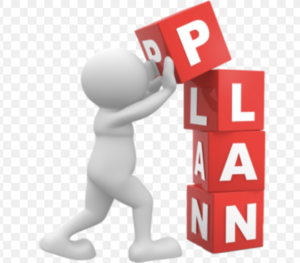
If you don’t know where you’re going,
You’ll probably end up somewhere else!”
– Yogi Berra
Over the past few weeks I’ve been facilitating the strategic planning sessions for Berks County’s, Girls On The Run (GOTR). During that time, the organization’s Executive Director and her Board worked diligently to develop a three-year plan that will enhance the viability of the organization and expand the services it provides to our county’s young women. Their efforts included pre-planning homework activities and dedicated off-site Saturday morning work sessions. That hard work paid off with the the identification of strategic goals and the development of action plans that will guide their efforts over the next three years. Following our final session I reflected on what had been accomplished by this talented group of volunteers. What impressed me most was their use of a strategic thinking process as a means of creating their strategic plan. They even identified their “Why”; Girls face social pressures and conflicting messages about how they should act and who they should be. We believe that EVERY GIRL is inherently FULL OF POWER and POTENTIAL. By knowing they are the leaders of their lives, these are the girls who WILL CHANGE THE WORLD. That is powerful! GOTR-Berks understands its “why”, and has developed a three year strategic plan that compliments it. So here is my question, What is your “why” and what’s your plan?
Dr. Nika White a published author and national authority and advocate for diversity, inclusion, and equity shares that personal strategic planning matters because it is a self-leadership strategy – if you can lead yourself you can lead others. Personal strategic planning is identifying your purpose and mission and exercising intention in executing that plan to accomplish what you set out to achieve. If you think about it, it’s really not much different from organizational strategic planning.
Strategic planning is nothing new. Businesses, non-profits, schools, and countless organizations have been pursuing this activity since the mid 1960’s. The process varies, but normally includes a needs assessment and/or SWOT (Strengths, Weaknesses, Opportunities, Threats) analysis, defining of core values, creation of mission and vision statements, identification of SMART( Specific, Measurable, Agreed-upon, Realistic, Timely) goals, and the development of action plans for each goal. What might be new for some is taking this process and applying it to our personal and professional lives. Think of it as creating a plan to pursue your professional and personal dreams. Need a reason? How about this, a 95 year-old Stanford study reveals that creating goals and pursuing them may be the secret to living a longer more fulfilling life.
Lewis Terman, a Stanford University psychologist, was a pioneer in I.Q. testing; his revisions of the Stanford-Binet test helped it become a widespread tool for measuring general intelligence. In 1921 he identified 1,500 children who had scored 135 or higher on the test and began one of the longest longitudinal studies ever conducted. His study (The Longevity Project) revealed:
- Those who actively pursued, and were highly engaged, in pursuing their goals, tended to live the longest, most fulfilling lives.
- Actually achieving your lifelong dreams didn’t matter. Pursuing those dreams is what counted.
Pursuing a dream or goal is a decision that begins with you. What does it take? Well why not a personal strategic plan? With some imagination, you could create a plan like Leo Lo.
Leo is 40 something and serves as Penn State University Libraries associate dean for Learning, Undergraduate Services and Commonwealth Campus Libraries. On his 40th birthday, he set out a 5-year plan to accomplish 45 things before he turns 45 (http://www.45before45project.com/). This was to be his quest to become the person he has always wanted to be: a happy person. Prior to commencing his journey he created a five-year strategic plan complete with Mission and Vision Statement, Core Values (Guiding Principles) and SMART Goals. He states, “ This is a list of intentions. It is a road map for me to experience the kind of life I want to live. It is my quest to become the person I’ve always wanted to be. Setting goals is a good way to achieve things you want in life. Even though I don’t know if I will be able to complete all 45 things, I know that simply by writing them down, it will give me motivation to get up each morning.”
So what is your plan? Plans give us direction and while we may not complete everything we set out to achieve, we don’t wander aimlessly searching for direction. We cannot change the past, we can only learn from it. Use what you have learned to create your plan for the future. You may not achieve every goal, but I can assure you that your life will be more fulfilling both now and in the future.
EMBRACE THE CHALLENGE
